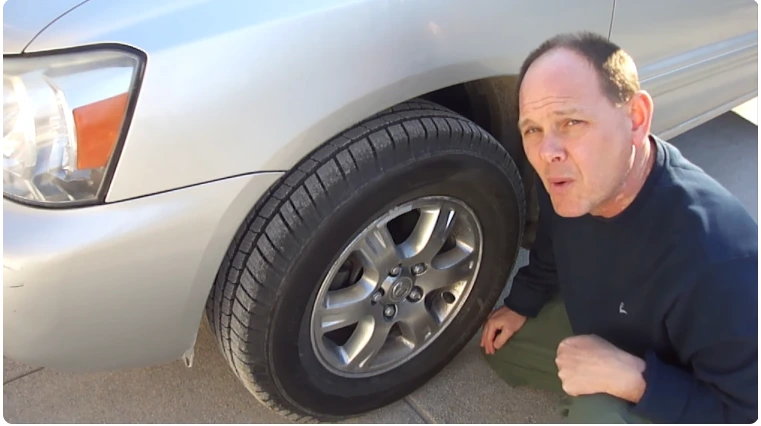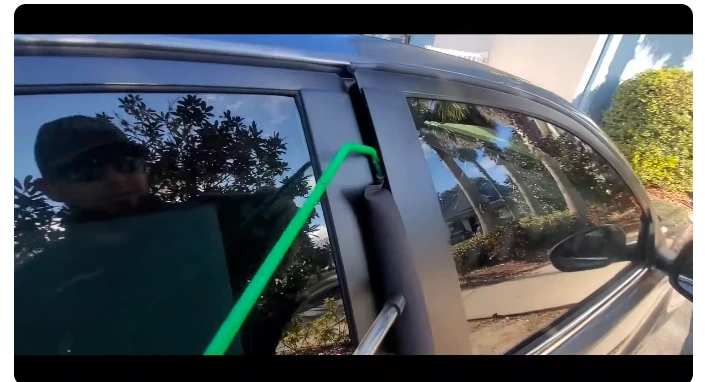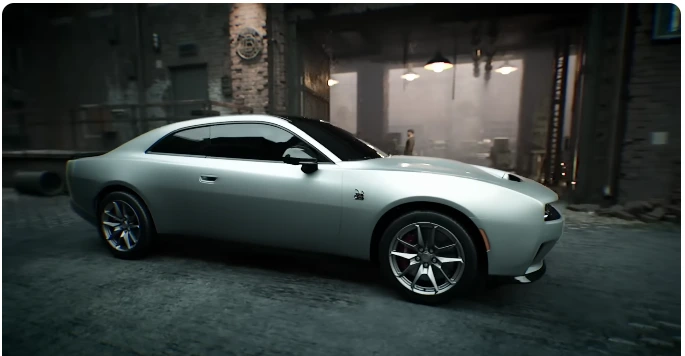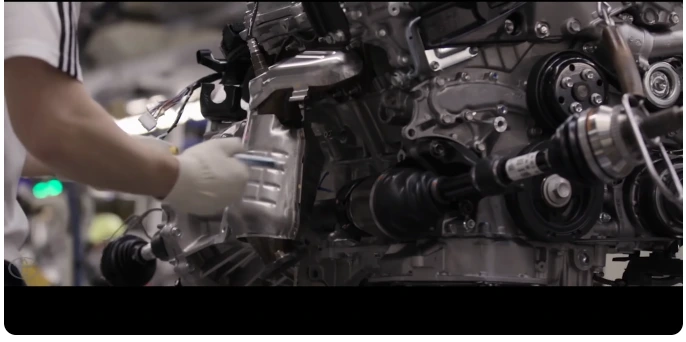Troubleshooting Low Tire Pressure Light: Common Causes and Solutions
Low tire pressure light but tires are fine? There can be several reasons for this issue, including a malfunctioning tire pressure monitoring system or incorrect tire pressure readings.
To fix this problem, first, check the tire pressure using a reliable tire gauge and ensure it matches the recommended pressure stated in the vehicle manual or on the driver’s side door jamb. If the tire pressure is correct, then the issue might lie with the tire pressure monitoring system, which may require professional diagnosis and repairs.
Understanding The Low Tire Pressure Light
Maintaining proper tire pressure is crucial for ensuring a safe and smooth driving experience. The low tire pressure light is a feature in most modern vehicles that alerts drivers to a decrease in tire pressure. While it can be concerning to see the light illuminate, it is essential to understand what it indicates and how to address the issue promptly.
Importance Of Maintaining Proper Tire Pressure:
- Adequate tire pressure ensures optimal handling, stability, and maneuverability of your vehicle.
- Properly inflated tires promote better fuel efficiency, saving you money at the pump.
- Maintaining the correct tire pressure reduces the risk of tire blowouts and extends the lifespan of your tires.
- Balanced tire pressure improves braking performance, allowing your vehicle to stop promptly in emergency situations.
- Consistently monitoring and adjusting tire pressure also enhances overall safety on the road.
What The Low Tire Pressure Light Indicates:
- The low tire pressure light alerts you when the tire pressure drops below the recommended levels set by the manufacturer.
- It serves as a warning sign, indicating that one or more of your tires may require attention or additional air.
- The light specifically helps identify slow leaks or gradual pressure losses that may not be easily noticeable during a visual inspection.
- Ignoring the light can lead to uneven tire wear, reduced traction, and compromised vehicle stability.
How The Light Is Triggered:
- The low tire pressure light is triggered by a sensor located inside each tire that measures the air pressure.
- When the pressure in a tire drops below the predetermined threshold, typically around 25% less than the recommended pressure, the sensor sends a signal to the vehicle’s onboard computer.
- The computer then illuminates the low tire pressure light on the dashboard, alerting the driver to the specific tire(s) requiring attention.
- Modern vehicles often provide information about individual tire pressure, allowing you to pinpoint the affected tire(s) and take appropriate action.
Remember, when the low tire pressure light illuminates, it is important not to ignore it. Promptly address the issue by checking the tire pressure and adding air as needed. Regularly inspecting your tires, maintaining proper inflation levels, and seeking professional assistance when necessary will ensure a safer and more enjoyable driving experience.
Common Causes Of Low Tire Pressure
A low tire pressure light can be an annoying and confusing issue to deal with, especially when you check your tires and they appear to be fine. However, there are several common causes that can lead to low tire pressure, even when the tires are seemingly in good condition.
Let’s take a closer look at these possible reasons and understand how they can be fixed.
Wear And Tear On Tires
Tires undergo natural wear and tear over time, which can result in a gradual loss of air pressure. Some key points to consider in relation to wear and tear on tires include:
- Over time, the rubber compound of the tires can degrade, leading to a slow loss of air pressure.
- Exposure to extreme temperatures and harsh road conditions can accelerate the rate of wear and tear on tires.
- Insufficient tread depth can also contribute to low tire pressure, as it can cause the tires to lose air more easily.
To address the issue of wear and tear on tires:
- Regularly inspect your tires for signs of wear, such as cracks, bulges, or uneven wear patterns.
- Ensure that your tires are properly inflated according to the manufacturer’s recommended psi (pounds per square inch).
- Consider rotating your tires regularly to promote even wear and prolong their lifespan.
Punctures And Leaks
One of the more common causes of low tire pressure is punctures or leaks in the tire. These can occur due to various reasons, such as:
- Nails, screws, or other sharp objects on the road can puncture the tire, causing it to lose air.
- Damaged valve stems or valve caps can lead to slow air leakage.
- Defective tire bead or rim can cause air to escape from the tire.
To fix punctures and leaks:
- Inspect your tires visually to check for any visible punctures.
- Use a tire pressure gauge to identify the exact source of the leak.
- For small punctures or leaks, a tire sealant or patch kit can be used as a temporary fix. However, it is advisable to get the tire repaired or replaced by a professional as soon as possible.
Seasonal Changes In Temperature
Fluctuations in temperature throughout the year can also affect tire pressure. Here are a few points to consider when it comes to seasonal changes:
- Cold weather can cause the air inside the tires to contract, leading to a decrease in pressure.
- Similarly, hot weather can cause the air inside the tires to expand, resulting in an increase in pressure.
- It is normal for tire pressure to fluctuate with changing temperatures, so regular checks and adjustments are necessary.
To address seasonal changes in temperature:
- Check and adjust your tire pressure regularly, especially during extreme temperature variations.
- Refer to the recommended psi for your tires and make adjustments accordingly.
- Keep in mind that tire pressure should be checked when the tires are cold, as driving can heat up the tires and give inaccurate readings.
There are various factors that can contribute to a low tire pressure light appearing, even if the tires seem to be fine. Issues such as wear and tear, punctures or leaks, and seasonal temperature changes can all affect tire pressure.
By understanding these common causes and following the appropriate steps to fix them, you can ensure proper tire maintenance and enjoy a safe and smooth driving experience.
Identifying The Cause Of Low Tire Pressure
Is your low tire pressure light illuminating on your dashboard, but when you check your tires, they seem perfectly fine? It can be frustrating and confusing, but don’t worry – there are several common reasons why this might be happening.
Let’s dive into some simple yet effective methods to identify the cause of your low tire pressure.
Visual Inspection Of Tires
Performing a visual inspection of your tires can provide valuable insights into the possible causes of low tire pressure. Here’s what you need to do:
- Check for any visible damage: Look closely for signs of punctures, cuts, or bulges on the tire surface.
- Inspect the valve stem: Ensure that the valve stem is not damaged or leaking air.
- Examine the tire beads: Inspect the area where the tire connects to the wheel, ensuring there are no visible gaps or damage.
- Note any unusual wear patterns: Uneven tread wear or bald spots could be an indicator of separate issues, such as misalignment or suspension problems.
Using A Tire Pressure Gauge
A tire pressure gauge is a handy tool that can provide you with accurate readings of your tire pressure. Follow these steps to properly use a tire pressure gauge and determine if your tires are indeed low on pressure:
- Locate the valve stem: Remove the valve cap and press the gauge onto the valve stem.
- Observe the pressure reading: The gauge will display the current pressure in your tire. Compare it to the recommended pressure level stated in your vehicle’s manual or the inside of the driver’s door.
- Repeat the process for each tire: Remember to check all four tires, as it’s possible for only one or two tires to have low pressure while others remain unaffected.
Checking For Punctures Or Leaks
Even if your tires look fine, there could still be punctures or leaks causing the low tire pressure. Here’s what you should do to rule out these possibilities:
- Inspect the tire treads: Run your hand around the entire circumference of each tire, feeling for any objects stuck in the tread.
- Submerge the tire in water: Fill a basin with soapy water and slowly roll each tire through it. Look for bubbles forming, as this indicates a leak.
- Use a leak-detection product: Alternatively, you can purchase a leak-detection spray or solution and apply it to the tires. If there’s a leak, the spray will bubble where the air is escaping.
By following these simple methods, you can identify the cause of your low tire pressure and take appropriate action. Whether it’s a visual issue, underinflation, or a puncture, addressing the problem promptly will help ensure your tires maintain optimal safety and performance levels.
Stay proactive and be vigilant when it comes to your tire maintenance – your safety on the road depends on it!
Solutions For Low Tire Pressure
Having a low tire pressure light illuminate on your dashboard can be a cause for concern. However, it’s important to note that sometimes the tires might actually be fine. Here are a few possible solutions to consider when faced with a low tire pressure light but tires that are seemingly in good condition:
Inflating The Tires To The Recommended Pressure
- Check the recommended tire pressure for your vehicle: The recommended tire pressure can usually be found in your vehicle’s owner manual or on a sticker located on the driver’s side door jamb.
- Use a reliable pressure gauge: To accurately measure the tire pressure, invest in a quality pressure gauge. Avoid relying solely on the gauge at the gas station, as they can be less accurate.
- Inflate the tires: If the tire pressure is below the recommended level, use an air compressor or visit a nearby gas station to inflate the tires. Make sure to add air gradually and check the pressure frequently to avoid overinflating.
- Repeat the process for all tires: Be sure to check and inflate the pressure for each tire, as individual tires may have different pressure requirements.
- Monitor the tire pressure regularly: After inflating the tires to the recommended pressure, keep an eye on the tire pressure regularly to ensure they remain properly inflated.
Patching And Repairing Punctures
- Inspect the tires for punctures: Visually check the tires for any visible punctures or nails embedded in the tread. If you notice a puncture, it’s important to address it promptly to prevent further damage.
- Assess the severity of the puncture: Determine whether the puncture can be repaired or if the tire needs to be replaced. Simple punctures in the tread can often be patched, while more severe damage or sidewall punctures may require tire replacement.
- Consult a professional: If you are unsure about the severity of the puncture or how to repair it, it is recommended to seek the assistance of a professional tire technician. They can provide expert guidance on the best course of action.
- Have punctures repaired by a professional: If the puncture is deemed repairable, take your vehicle to a reputable tire shop or service center to have it properly patched. Improperly patched punctures can lead to air leaks and further tire damage.
Replacing Damaged Or Worn Tires
- Inspect the tires for damage or excessive wear: Check for signs of damage such as bulges, cracks, or uneven wear patterns on the tires. If the tread depth is below the recommended minimum, it may be time to replace the tires.
- Consider the age of the tires: Tires have a limited lifespan and can deteriorate over time, even if they appear to be in good condition. If your tires are several years old, it might be advisable to replace them.
- Consult with a tire professional: If you’re unsure whether your tires need replacement, consult with a tire specialist who can assess the condition of your tires and provide recommendations based on their expertise.
- Purchase new tires: If it’s determined that your tires need replacement, select high-quality tires that are suitable for your vehicle and driving conditions. Ensure that the new tires are properly installed and balanced.
Remember, it’s essential to maintain proper tire pressure as it impacts your vehicle’s safety, fuel efficiency, and overall performance. By promptly addressing low tire pressure and following these solutions, you can ensure that your tires remain in optimal condition.
Preventative Measures To Avoid Low Tire Pressure
Maintaining proper tire pressure is essential for the safety and performance of your vehicle. Low tire pressure can lead to decreased fuel efficiency, poor handling, and increased risk of tire damage or blowouts. To prevent the inconvenience of a low tire pressure light without any obvious issues with your tires, consider implementing the following preventative measures:
Regularly Checking Tire Pressure
- Check your tire pressure at least once a month, or more frequently if you suspect any issues.
- Use a reliable tire pressure gauge to measure the pressure in each tire accurately.
- Refer to your vehicle’s owner’s manual or the placard located in the driver’s side door jamb for the recommended tire pressure.
- Ensure the tires are cold before checking the pressure, as heat from driving can affect the readings.
Proper Tire Maintenance And Rotation
- Maintain proper tire maintenance by regularly inspecting and inflating your tires.
- Look for signs of wear, such as uneven tread wear or bulges, and address any issues promptly.
- Rotate your tires according to your vehicle manufacturer’s recommendations to promote even wear and extend tire life.
- Properly aligned wheels also contribute to even tread wear and help prevent low tire pressure issues.
Using Tire Sealants Or Puncture-Resistant Tires
- Consider using tire sealants, which can provide temporary repairs for small punctures and slow leaks.
- These sealants can be applied directly into the tire and help seal off leaks, providing extra peace of mind.
- Another option is to invest in puncture-resistant tires that are designed to withstand punctures and minimize the risk of low tire pressure situations.
Remember, even with these preventive measures, it’s still crucial to regularly check your tire pressure and address any issues promptly. By staying proactive and maintaining proper tire care, you can minimize the occurrence of low tire pressure and ensure a safer and smoother driving experience.
Importance Of Addressing Low Tire Pressure Promptly
Addressing low tire pressure promptly is crucial to ensure the safety of your vehicle and your well-being on the road. Ignoring the low tire pressure light, even if the tires appear to be fine, can have serious consequences. Here are some important reasons why you should address low tire pressure promptly:
Safety Risks Associated With Underinflated Tires
Underinflated tires pose significant safety risks that should not be overlooked. Some of the dangers associated with driving on underinflated tires include:
- Reduced braking effectiveness: Underinflated tires require more distance to come to a complete stop, which can lead to accidents in emergency braking situations.
- Poor handling and stability: When tires have low pressure, they can become more prone to skidding and loss of control, especially during turns or sudden maneuvers.
- Increased risk of blowouts: Underinflated tires are more susceptible to overheating and are more likely to experience a blowout, potentially causing a loss of control while driving.
Impact On Fuel Efficiency
Low tire pressure can also impact the fuel efficiency of your vehicle. Here’s how:
- Increased rolling resistance: Underinflated tires create more rolling resistance, which means your engine needs to work harder to maintain speed. This can lead to decreased fuel economy and more frequent visits to the gas station.
- Higher fuel consumption: When your vehicle has to work harder due to underinflated tires, it consumes more fuel to compensate for the extra effort. This can result in unnecessary fuel expenses and increased environmental impact.
Potential Damage To The Vehicle’S Suspension
Ignoring low tire pressure can lead to potential damage to your vehicle’s suspension system. Here’s why:
- Uneven tire wear: Underinflated tires tend to wear out unevenly, which can put additional strain on your vehicle’s suspension components. This uneven wear can lead to premature failure of suspension parts, such as shock absorbers and struts.
- Costly repairs: Neglecting low tire pressure for an extended period can result in the need for costly suspension repairs or replacements. By addressing low tire pressure promptly, you can avoid unnecessary expenses down the line.
To maintain optimal safety, fuel efficiency, and reduce the risk of vehicle damage, it’s essential to address low tire pressure promptly. Regularly checking and inflating your tires to the recommended pressure levels will ensure a smoother and safer driving experience.
Don’t ignore that low tire pressure light – take action and keep your tires properly inflated. Stay safe on the road!
Common Myths And Misconceptions About Low Tire Pressure
There are several common myths and misconceptions surrounding low tire pressure that may lead people to make incorrect assumptions about their tires. Let’s debunk some of these misconceptions and understand the truth behind them:
Myth: Overinflating Tires Will Prevent Low Pressure
- In reality, overinflating your tires is not a solution to prevent low pressure. It may seem like a logical step to take, but it can actually have adverse effects on your driving experience and tire longevity.
- Overinflated tires result in a harsher ride and decreased traction, which can compromise your safety on the road.
- Excessive pressure can cause the center of the tire to wear out faster than the edges, reducing overall tire life and potentially leading to a blowout or tread separation.
Myth: Cold Weather Causes Low Tire Pressure
- While it is true that cold weather can cause a decrease in tire pressure, it is not the direct cause of low tire pressure indicators.
- When the temperature drops, air molecules in your tires condense, leading to a decrease in pressure. However, it is essential to understand that temperature fluctuations alone cannot be solely blamed for low tire pressure warnings.
- Tire pressure is influenced by several factors, including ambient temperature, the tire’s aging condition, punctures, valve leaks, or even slow leaks due to worn-out components.
Myth: Checking Tire Pressure Is Unnecessary
- Regularly checking your tire pressure is crucial for your safety, vehicle performance, and tire life.
- Adequate tire pressure ensures optimal handling, fuel efficiency, and even tire wear. Underinflated tires can result in increased rolling resistance, leading to reduced fuel efficiency.
- Neglecting tire pressure checks can contribute to uneven tire wear, reduced tread life, decreased vehicle stability, and even potential blowouts.
- It is recommended to check your tire pressure at least once a month and before long trips, using a tire pressure gauge when the tires are cold.
Remember, when it comes to tire pressure, it’s best to adhere to manufacturer guidelines and maintain an optimal range. Avoid falling for common myths and misconceptions, and prioritize regular tire pressure checks for a safe and smooth driving experience.
Conclusion
To conclude, if you find your low tire pressure light is illuminated but your tires appear to be fine, there are a few reasons and solutions to consider. Firstly, check for any visible damage or punctures on your tires that may be causing air leakage.
Additionally, ensure that the valve stems are properly seated and not leaking. It’s also important to regularly check your tire pressure and inflate them to the manufacturer’s recommended levels. Moreover, consider the possibility of a faulty tire pressure monitoring system (tpms) sensor, which may need to be replaced.
Remember to consult a professional if you’re unsure or unable to diagnose the issue yourself. By addressing these possible causes and following the appropriate solutions, you can ensure safe driving and avoid potential tire-related problems down the line.






